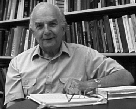
RESEARCH DESCRIPTION:
1 Physical chemistry of conducting polymers: The mechanism of ionization of electrically active deposits, the nature of carrier species (polarons, bipolarons, etc.), and band structure in conducting polymers possessing conjugated pi bands is studied by thermodynamic means involving solubility, Donnan equilibrium, and electrochemistry. In addition we have discovered that conducting polymers constitute unique and (incredible) gas selective membranes. Research on this aspect is in progress and we are also developing an active as opposed to a passive membrane by incorporating conducting polymers into Schottky junctions.
2 Statistical mechanics: The statistical mechanics of a variety of strongly coupled systems is under investigation. Such systems include hard spheres, molecular composites of polymers, and clusters. We have made much progress in the "geometric theory" of hard spheres and also with the phenomenon of "random sequential adsorption." Progress has also been made in the evaluation of configurational entropy both in microemulsions and polymers. Both analytical and computer simulation techniques are used.
3 Electrochemistry: Work has been completed on the fundamental nonlinear theory of redox couples, nonequilibrium diffuse space charge layers, and on the direct measurement of charge in an electrical double layer.
4 Nucleation: a physically consistent molecular theory of vapor phase nucleation has been developed and new measurements on nucleation have been performed. Work continues.
KEY CONCEPTS AND WORDS:
Physical Chemistry: true gas phase polymerization using nucleation for detection; chemical physical studies by means of gas phase polymerization; physical chemistry of conducting polymers; statistical mechanics.